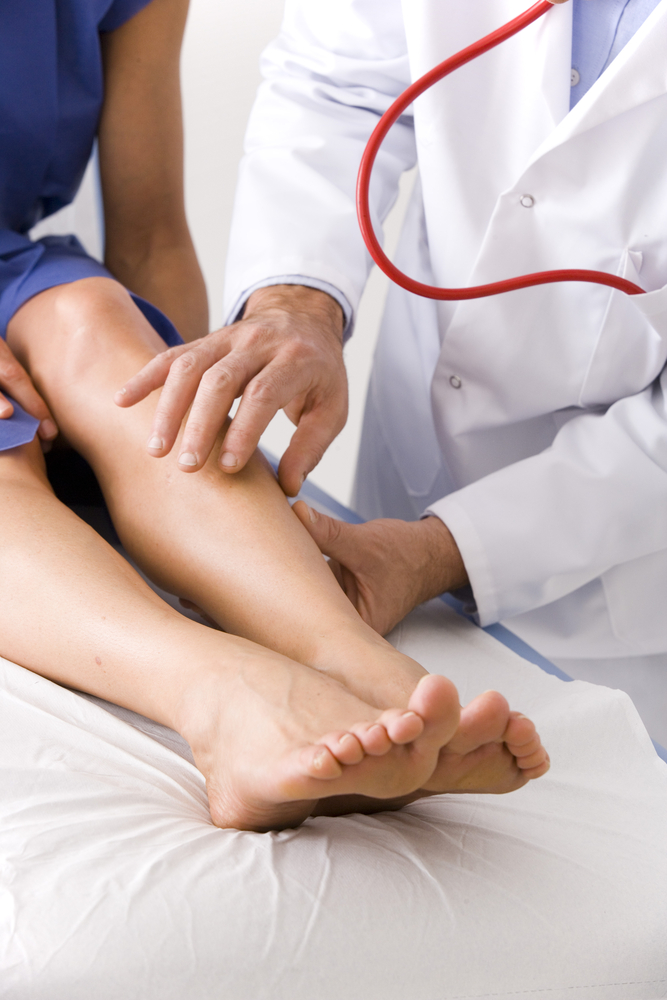What Is DVT?
Deep vein thrombosis is a vascular condition that occurs when a blood clot forms in your deep veins. Typically this occurs in the saphenous vein. Most of the time this condition is harmless, but it can become life-threatening if a pulmonary embolism forms. DVT is most often characterized by the blockage of one of the veins and accompanying leg pain and swelling. Occasionally, there can also be varicose or spider veins around where the blockage was.
What Causes DVT?
Deep vein thrombosis is caused by several factors, including weight, exercise habits, or lack thereof, diet, genetic predisposition, past surgeries or injuries. Age is another factor that makes developing DVT more likely overall.
How Long Can You Have DVT Without Knowing?
Anyone can develop asymptomatic DVT, but it’s unlikely that it will go unnoticed. In many cases not all of the vein will be blocked off, maybe 20 percent to 50 percent of the vein will be blocked. But it’s still enough to notice some symptoms.
It should also be noted that there are many variables when it comes to DVT and the symptoms that patients experience.
What Causes DVT?
The main cause of deep vein thrombosis is trauma from injuries or surgery. The body’s natural healing response begins clumping red blood cells and platelets to form blood clots to prevent blood loss. However, blood clots when they form in the veins will begin causing problems.
This is typically the same condition that causes varicose veins and spider veins.
Risk Factors for DVT
The following health factors are known to affect your risk for developing vascular disease, leg ulcers, and leg discoloration.
- Obesity
- Age
- Sitting for long periods
- Long periods of bed rest
- Birth control pills
- Hormone replacement therapy (HRT)
- High blood pressure
- Existing heart conditions
- Kidney failure
- Previous surgeries in the affected area
- Frequent alcohol use
- A history of smoking
- Genetics
- Heart disease or heart failure
- Inflammatory bowel diseases (Crohn’s, IBS, or ulcerative colitis)
- Poor diet
- Traumatic injuries
- Certain types of cancer (some brain cancers, pancreas, ovary, colon, stomach, kidney, lung, lymphoma, leukemia, and liver cancer)
How Fast Does a Blood Clot Travel From The Leg to the Lungs?
There’s no set speed for how long a blood clot will take to travel from your leg to your lungs. Some blood clots are slow-moving, and others will travel faster. But if you start noticing symptoms of PE, then you need treatment immediately.
How Long Can You Have DVT Without Knowing?
Anyone can develop asymptomatic DVT, but it’s unlikely that it will go unnoticed. In many cases not all of the vein will be blocked off, maybe 20 percent to 50 percent of the vein will be blocked. But it’s still enough to notice some symptoms.
It should also be noted that there are many variables when it comes to DVT and the symptoms that patients experience.
- Difficulty breathing
- Rapid and abnormal heartbeat
- Chest pain that gets worse
when coughing or taking deep breaths - Feeling faint
- Lightheadedness
- Anxiousness
- Sweating
- Fever
- Cold or clammy skin
- Skin discoloration
Compression Therapy
Our go-to method for treating any vein condition is prescription-strength compression stockings. When worn properly, compression stockings improve overall blood flow through the legs. Additionally, they’ll help reduce the formation of blood clots and blood pooling.
Blood Thinners
Anticoagulant medication is the other most commonly prescribed treatment for DVT. It should be noted that these prescriptions do not break up blood clots, but they do prevent more blood clots from forming. Additionally, blood thinners will help prevent the growth of existing blood clots.
Typically, we prescribe blood thinners to be taken orally. However, if your doctor recommends it, certain blood thinners can be given through an IV. Depending on your condition, these prescriptions may be combined so you can see the best results.
Typical Blood Thinner Medications
- Heparin
- Enoxaparin (Lovenox)
- Fondaparinux (Arixtra)
- Rivaroxaban (Xarelto)
- Apixaban (Eliquis)
- Edoxaban (Savaysa)
Clot Busters (Thrombolytics)
If you have a more serious blockage from DVT, your doctor might prescribe treatment with one of these drugs. Especially if other drugs are not proving to be effective. These prescriptions are only used in extreme cases of blood clotting as they do cause serious bleeding due to their anti-coagulating nature.
These drugs are typically administered via IV or catheter, directly to the blood clot.
Vascular Surgery
At VeinSolutions™ we offer a variety of surgical and minimally invasive surgical treatments to deal with DVT. We can remove the diseased section of the vein where the thrombosis is to clear the blockage and restore proper blood flow.
Other DVT Surgeries
- Open Thrombectomy
- Minimally Invasive Thrombectomy
- Intravenous Filter Placement
- Microphlebectomy
Diagnosing DVT
The first step in identifying and diagnosing DVT is through a FREE vein screening with our vein specialists. If your vein exam does not produce enough quality results for us to make a conclusive diagnosis, Dr. Garner or another vein specialist might recommend a venous ultrasound.
Compression Therapy
Our go-to method for treating any vein condition is prescription-strength compression stockings. When worn properly, compression stockings improve overall blood flow through the legs. Additionally, they’ll help reduce the formation of blood clots and blood pooling.
Blood Thinners
Anticoagulant medication is the other most commonly prescribed treatment for DVT. It should be noted that these prescriptions do not break up blood clots, but they do prevent more blood clots from forming. Additionally, blood thinners will help prevent the growth of existing blood clots.
Typically, we prescribe blood thinners to be taken orally. However, if your doctor recommends it, certain blood thinners can be given through an IV. Depending on your condition, these prescriptions may be combined so you can see the best results.
Typical Blood Thinner Medications
- Heparin
- Enoxaparin (Lovenox)
- Fondaparinux (Arixtra)
- Rivaroxaban (Xarelto)
- Apixaban (Eliquis)
- Edoxaban (Savaysa)
Clot Busters (Thrombolytics)
If you have a more serious blockage from DVT, your doctor might prescribe treatment with one of these drugs. Especially if other drugs are not proving to be effective. These prescriptions are only used in extreme cases of blood clotting as they do cause serious bleeding due to their anti-coagulating nature.
These drugs are typically administered via IV or catheter, directly to the blood clot.
Vascular Surgery
At VeinSolutions™ we offer a variety of surgical and minimally invasive surgical treatments to deal with DVT. We can remove the diseased section of the vein where the thrombosis is to clear the blockage and restore proper blood flow.
Other DVT Surgeries
- Open Thrombectomy
- Minimally Invasive Thrombectomy
- Intravenous Filter Placement
- Microphlebectomy
Diagnosing DVT
The first step in identifying and diagnosing DVT is through a FREE vein screening with our vein specialists. If your vein exam does not produce enough quality results for us to make a conclusive diagnosis, Dr. Garner or another vein specialist might recommend a venous ultrasound.

